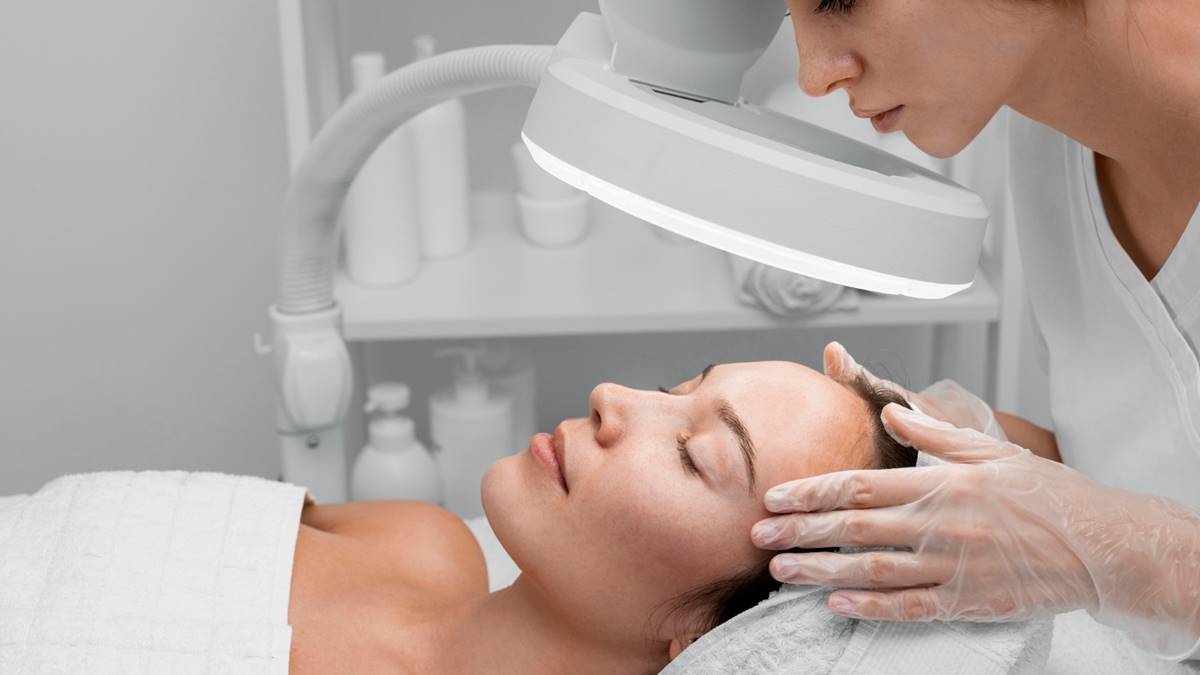You’ve probably noticed it too—people seem to be aging differently these days. Not just better, but slower. That impossibly glowing 50-year-old CEO, the investor who looks a decade younger than his passport claims, the influencer who never seems to develop lines despite years of global red-eye flights—this is not just about good genes or good lighting. It’s the result of a booming industry where skincare, biotechnology, and luxury intersect in remarkable ways.
In 2025, skin rejuvenation has evolved far beyond cucumber slices and over-the-counter serums. We’re in the era of science-backed transformations, and the toolkit available today is as futuristic as it is effective. But with so many new solutions out there—from laser resurfacing to stem cell serums—it’s natural to wonder: Which ones actually deliver? That’s exactly what we’re diving into.
The shifting face of skincare
Forget everything you thought you knew about facials. Today’s treatments don’t just hydrate or exfoliate—they reprogram. Clinical aesthetics has become a hybrid field where dermatology meets biotech. Personalized skin mapping, peptide-rich formulations, and non-invasive procedures are now the gold standard.
And the best part? These treatments aren’t just for celebrities prepping for the red carpet. More and more professionals like you—people who need to show up sharp in both boardrooms and social circles—are turning to skin health as a key component of personal branding and performance.
Technology meets texture
One of the reasons modern treatments are so effective is because they no longer just treat the surface. Today, results-driven methods focus on the deeper dermal layers where collagen lives and cellular renewal begins. Lasers calibrated to skin tone, microneedling combined with radiofrequency, and oxygen infusion therapies are just some of the innovations reshaping the industry.
But perhaps one of the most talked-about options in luxury skincare today involves chemical peeling. And yes, it raises the question: do age reversal peels really work? The short answer is: they can—if done properly. Unlike traditional peels, these next-gen versions are packed with advanced ingredients like retinoic acid, growth factors, and antioxidants. They don’t just exfoliate—they stimulate new skin formation. The result? Improved texture, softened wrinkles, reduced pigmentation. That said, results depend heavily on skin type, pre-treatment prep, and post-treatment care. So if you’re considering one, be picky about who performs it—and how.
Longevity over quick fixes
There’s a growing preference for treatments that offer sustainable results rather than quick cosmetic tweaks. It’s not just about looking younger on the weekend—it’s about being visibly refreshed six months from now. That’s why services like fractional laser therapy, PRP (platelet-rich plasma), and fibroblast treatments are gaining traction. They operate on a cellular level, boosting the skin’s natural ability to regenerate over time.
This shift is part of a larger trend toward preventative aesthetics. Instead of waiting for deep lines or volume loss to appear, savvy clients are maintaining skin health proactively—much like we do with fitness or nutrition. The idea is to slow the biological clock before it becomes visible, not chase youth once it’s slipped too far.
What about body-focused concerns?
Of course, skincare isn’t just about the face. Body contouring, skin tightening, and cellulite management are also evolving fast. High-frequency ultrasound, cryolipolysis, and lymphatic drainage massage have all become part of the wellness vocabulary.
Still, one of the most common questions among clients remains: how long do cellulite treatments last? The reality is, there’s no one-size-fits-all answer. Depending on the method—laser-based, injectable, or mechanical stimulation—results can range from a few months to over a year. Lifestyle, hydration, and ongoing maintenance all play major roles. The good news? With regular upkeep and the right provider, long-term improvement is absolutely achievable.
Data-driven beauty
One of the more exciting developments in this field is the integration of diagnostic technology. Devices now measure everything from moisture levels to pigmentation imbalances in real-time, allowing for hyper-targeted treatments. Imagine walking into a med spa and having your skin analyzed via 3D imaging, then receiving a custom-formulated serum tailored to your exact profile. It’s not science fiction anymore—it’s what top-tier clinics are already offering.
And don’t be surprised if AI becomes your next skincare advisor. Predictive analytics are being used to model how your skin will respond to specific treatments based on genetics, lifestyle, and environmental exposure. This means better outcomes, fewer risks, and more personalized experiences.
Investment or indulgence?
Some might argue that these treatments are luxuries—but is that really the case? For many high-performers, taking care of appearance is as essential as managing diet or stress levels. Looking rested and healthy can influence how you’re perceived, whether you’re pitching investors, leading a team, or negotiating with partners. In that context, advanced skincare becomes less about vanity and more about strategy.
Moreover, investing in non-surgical rejuvenation now can delay or even eliminate the need for more invasive procedures down the line. It’s about staying ahead of the curve—not playing catch-up.
Where to from here?
If you’re serious about integrating aesthetic wellness into your routine, the best advice is to approach it like you would any other business decision: informed, intentional, and goal-driven. Identify your needs, research thoroughly, and choose providers who offer a balance of scientific rigor and aesthetic expertise.
And maybe, just maybe, consider that looking your best isn’t about turning back time—it’s about owning every stage with clarity, vitality, and confidence.
Because in the end, it’s not really about erasing years. It’s about showing the world exactly how far you’ve come—and doing it with luminous skin and unapologetic presence.

